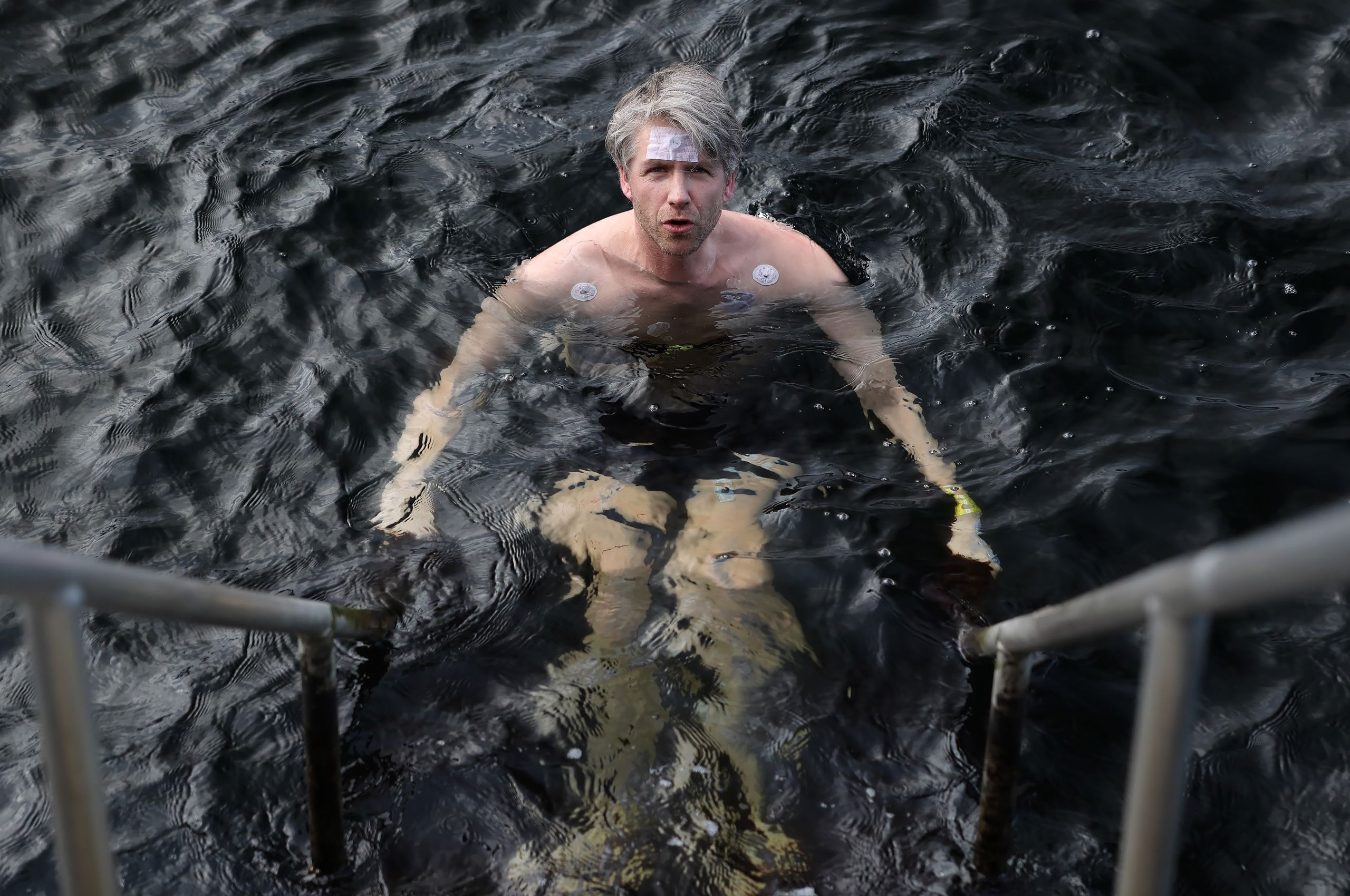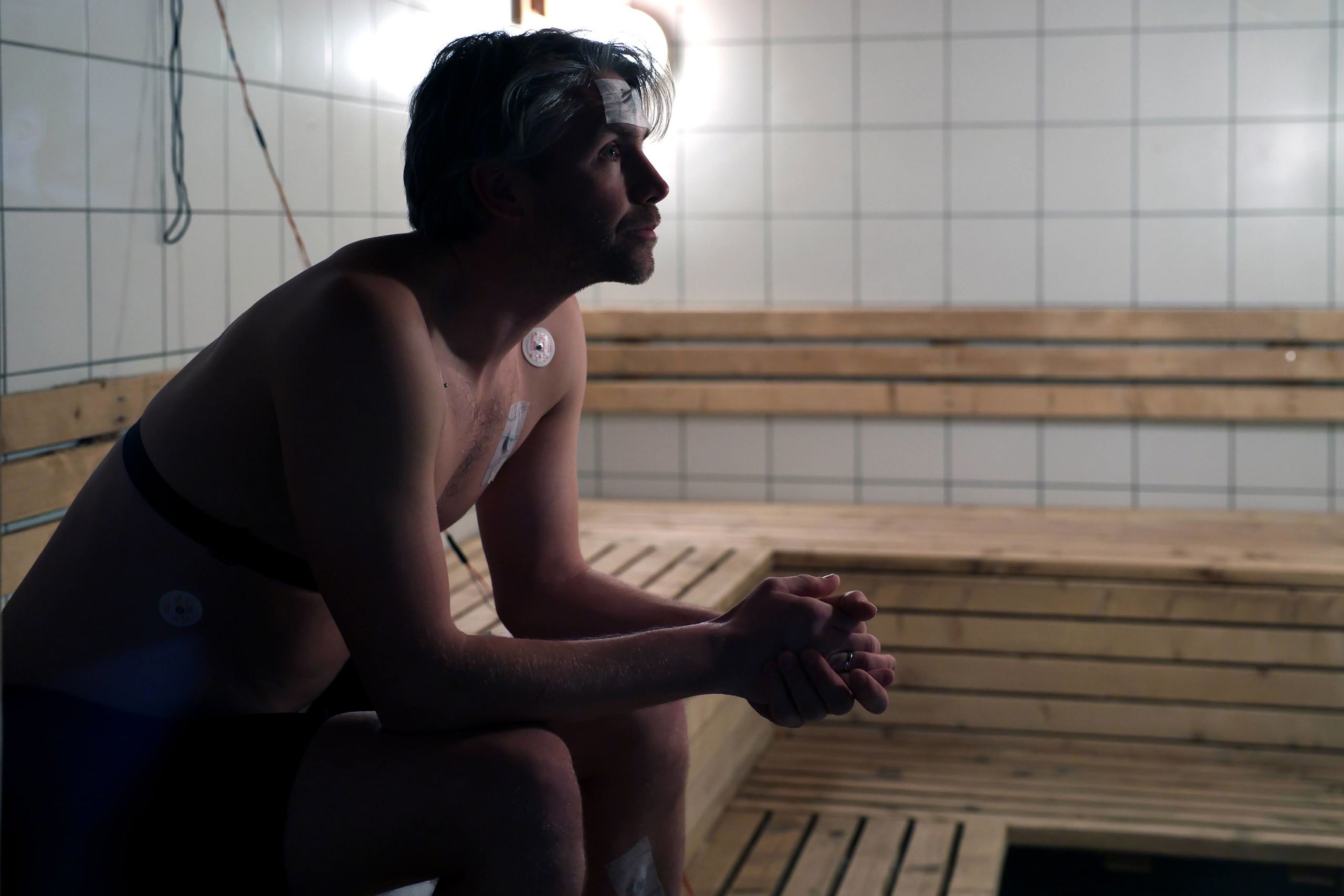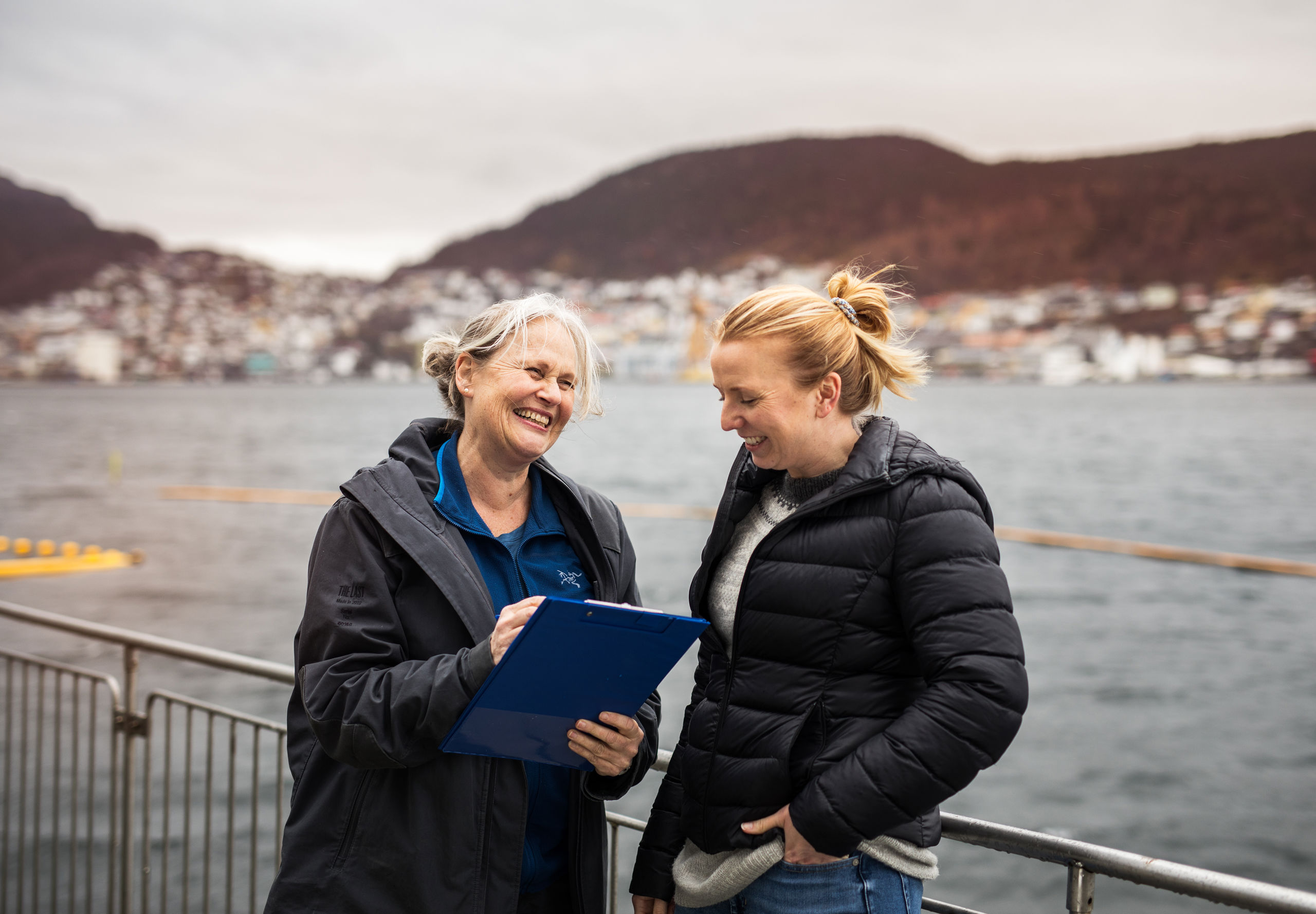Studying the effects of sauna and cold plunges
While the water temperature measures a frigid 4 degrees, the sauna is heated to 90 degrees.
What immediate effects this temperature change has on cardiovascular health, researchers at the Western Norway University of Applied Sciences (HVL) aim to answer.
"Our study is the first to examine the combined effects in a realistic setting," Ann-Katrin Grotle says, an associate professor and exercise physiologist at HVL.
Grotle's interest in this growing trend began after she moved back to Norway from the United States, inspiring the research project she now leads.
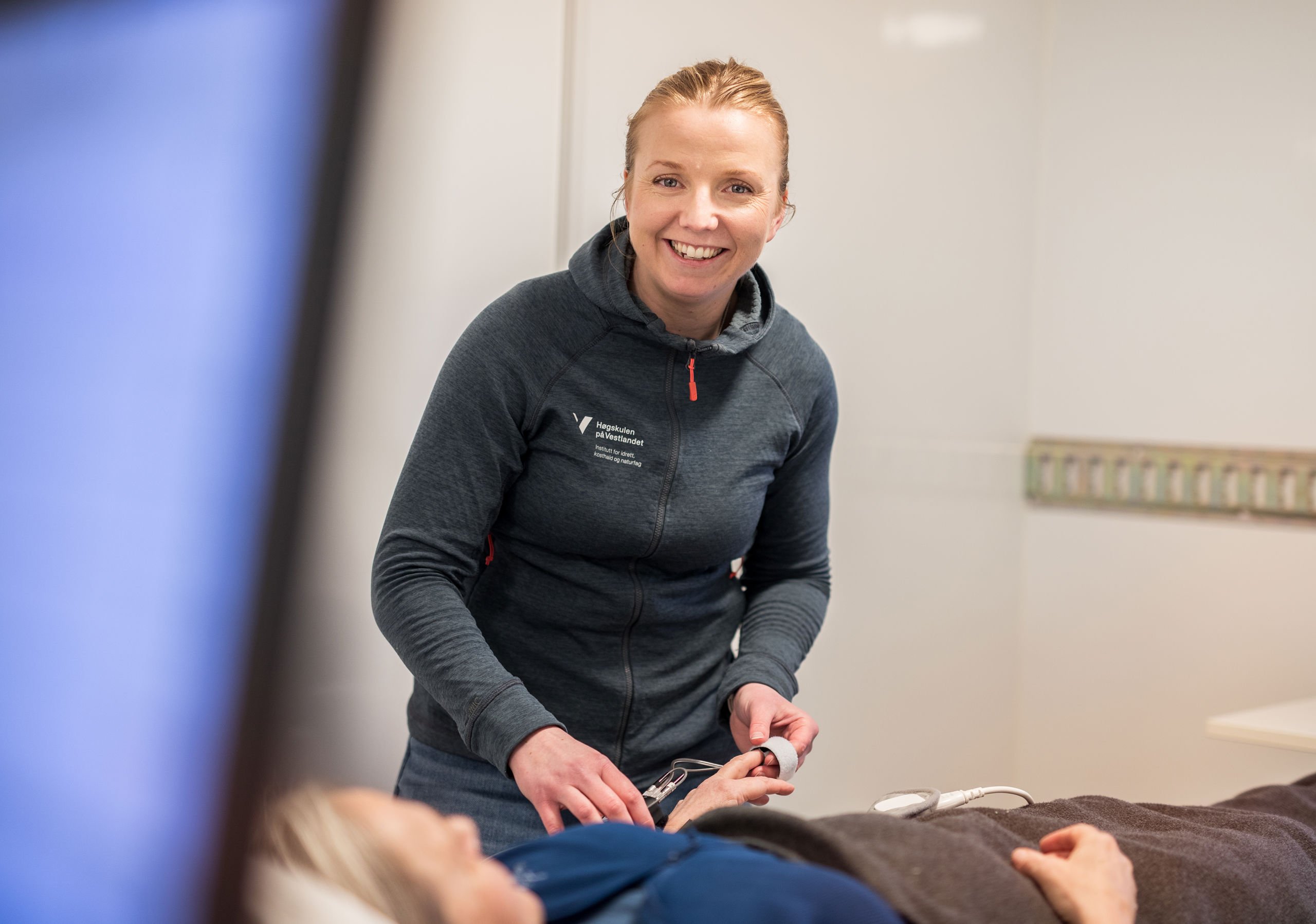
"We know that heat therapy, such as sauna, can lower blood pressure and improve circulation. However, the effects when combined with cold therapy are not well understood," Grotle says.

In collaboration with Professor Hege Randi Eriksen, she aims to discover these impacts. Together they conduct both physiological and psychological measurements in HVL’s mobile test lab.
While Grotle examines how heart rate, blood pressure and stress responses are affected, Eriksen investigates how the participants' expectations to the physically stressors play a role.
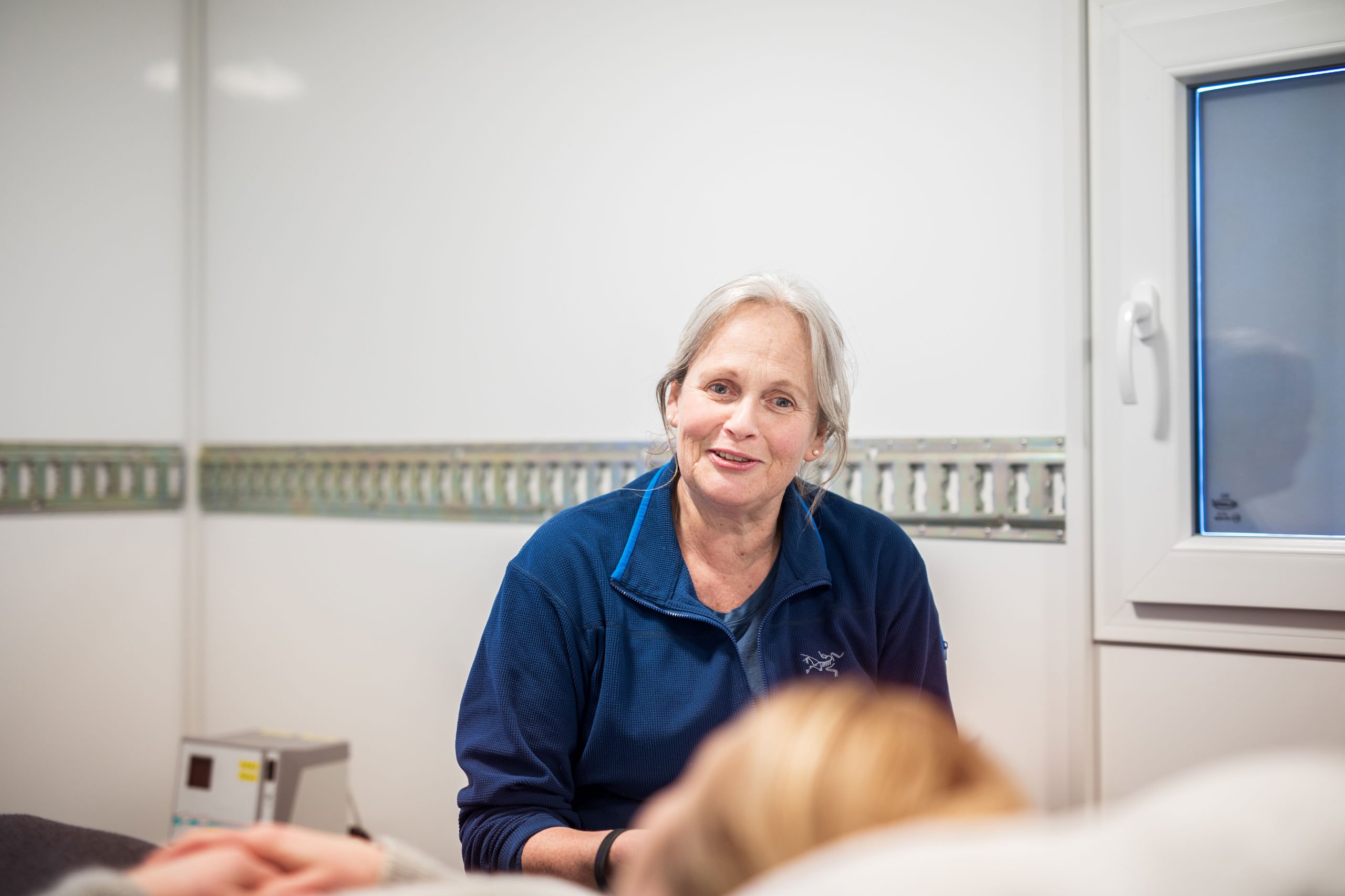
"Cold exposure has gotten attention in psychology, and many report positive effects on mental health. In our study we want to see whether psychological expectations can influence the physical effects".
Afterwards, they compare the results with effects from interval training.
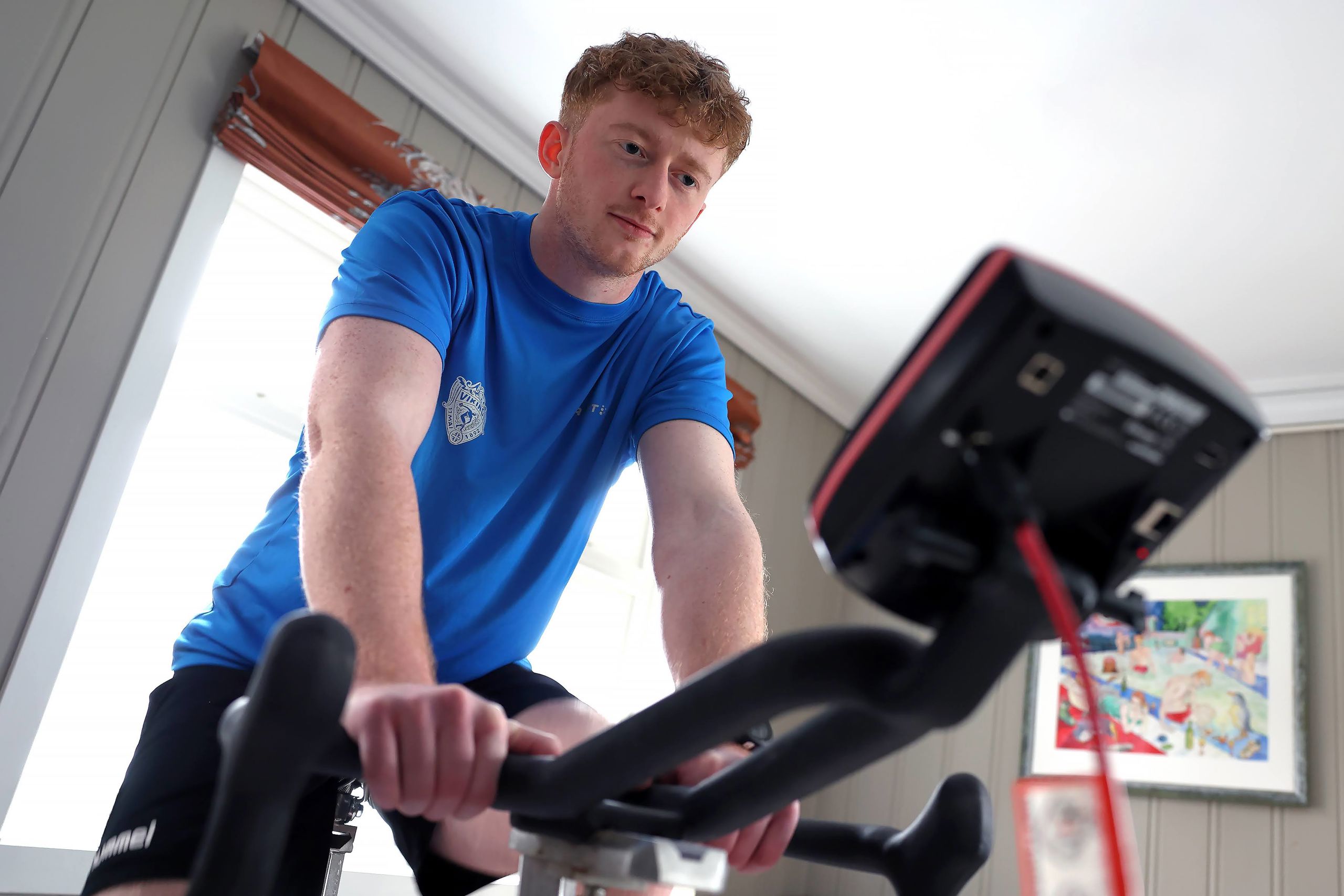
"High-intensity interval training can have immediate, positive effects on cardiovascular health. Therefore, it would be fascinating to see if there are any similarities with sauna and cold plunges."
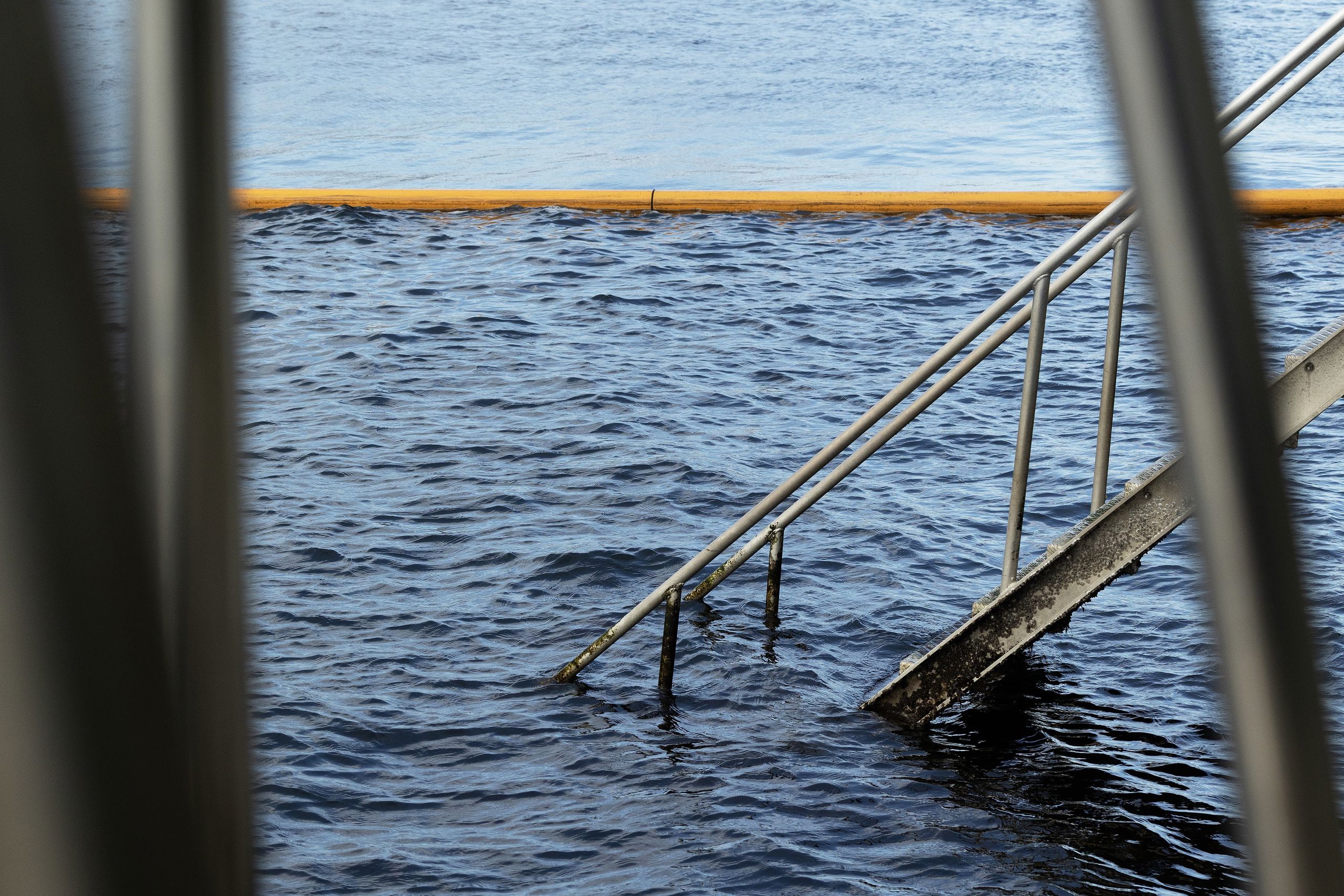
The first round of testing started at Nordnes Sjøbad in March. When recruiting for volunteer participants, they got an overwhelming response.
"Usually, recruiting test subjects is challenging, but this time they were practically lining up. As many as 300 people showed interest," Grotle says.
Despite the enthusiasm from active winter swimmers, the researchers were specifically looking for people with no prior experience.
Martin Skagseth (41) from NORCE was a perfect candidate and signed up for the sake of science.
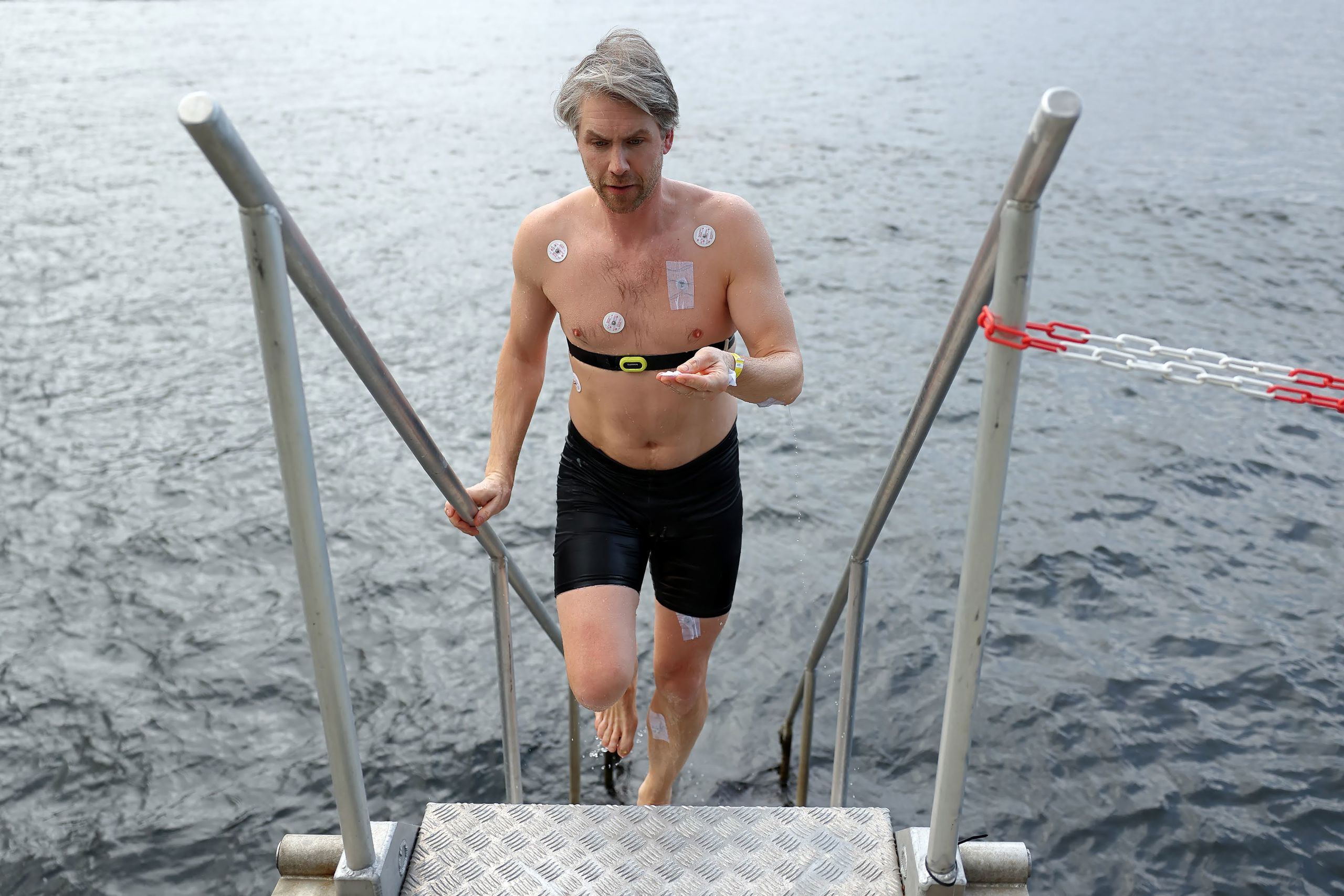
With electrodes attached from head to toe, he spent one minute in the cold water. Now, ten minutes in the sauna await before he must return into the water once more.
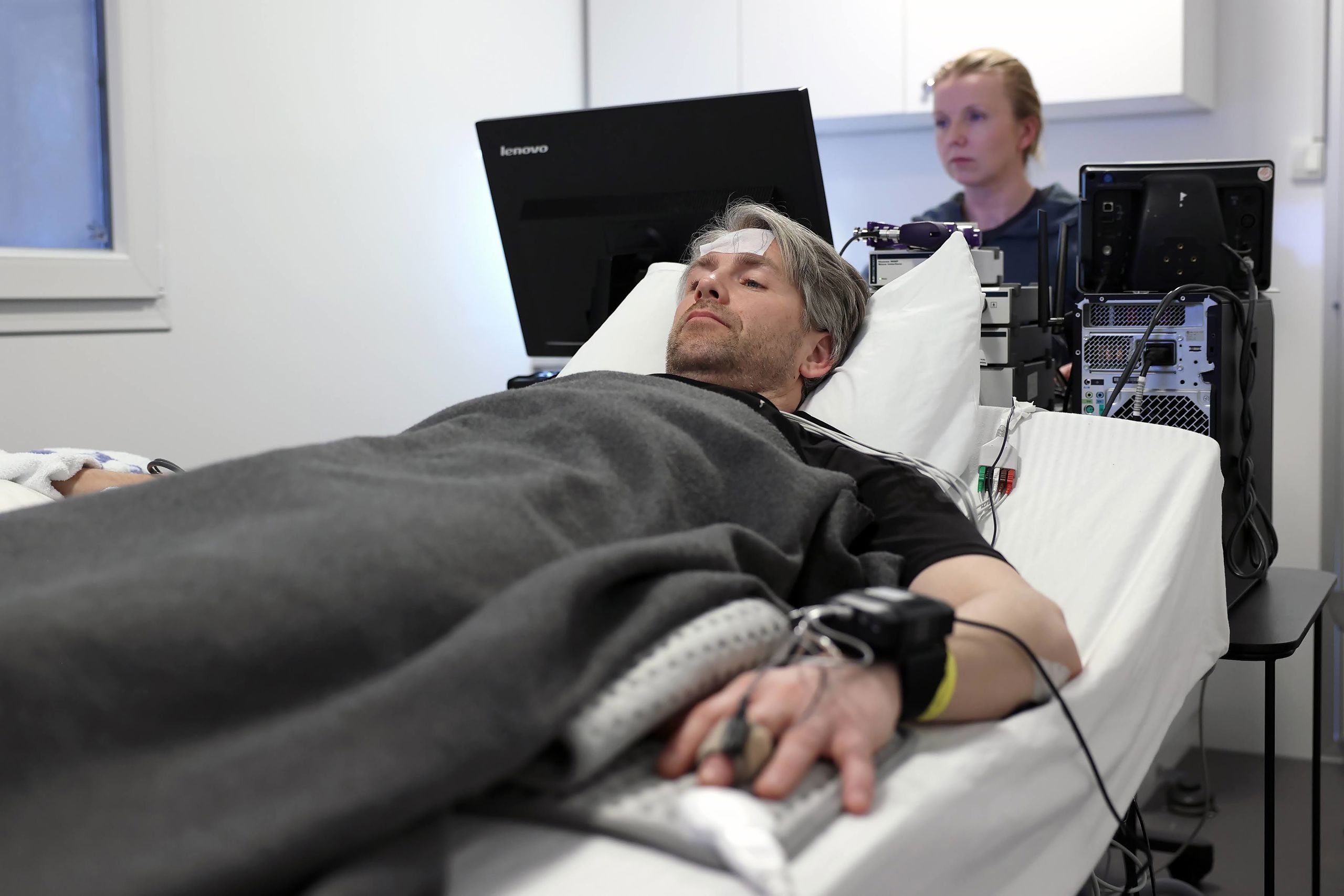
Grotle explains that each participant undergoes three days of testing. First, they perform thorough baseline measurements. Then, one day is dedicated to intervals on a spin bike, and another to sauna and cold plunges.
A significant amount of time is allocated to testing. Without the collaboration with students at HVL and staff from Nordnes Sjøbad, the project would not be possible to carry out, Grotle emphasizes.
Viljar Sjuve and Simen Nordheim are the ones in charge during the sauna and cold water sessions. They study Public Health at HVL and base their bachelor’s thesis on data they collect.
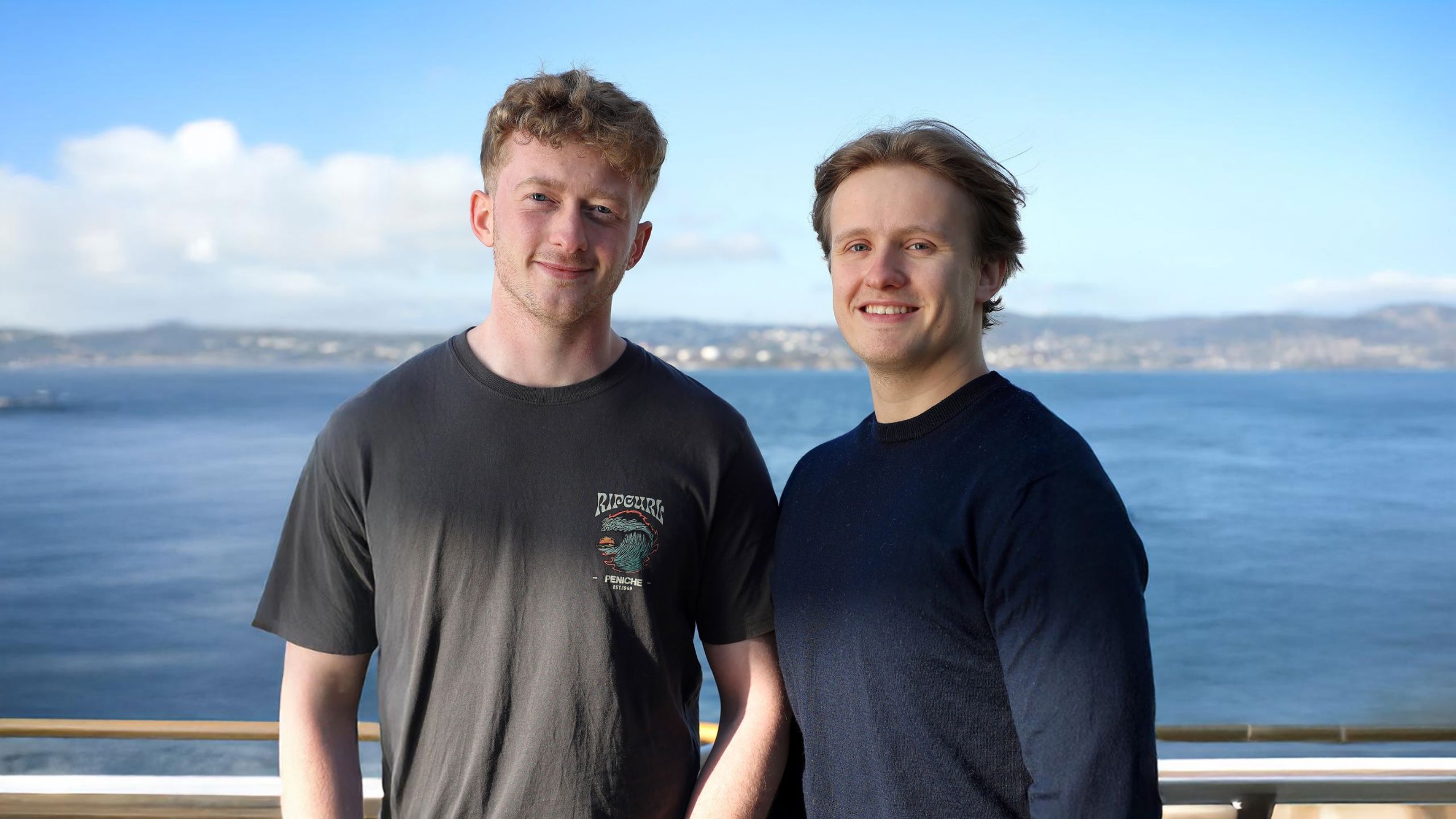
"Our main task is to measure temperature, heart rate and perceived pain and discomfort. The testing takes time, but the process is highly educational and provides a strong sense of achievement", Viljar Sjuve says (to the right).
Next year the research team will gain a new member. Michael Vesterlid, a master's student in sports science, will help lead the project into its final phase.
Since there is more data to collect and analyze, it is still too early to make any definitive statements about the results. However, the researchers can reveal some preliminary trends.

"Some of our findings so far suggest that the combination of sauna and cold water may positively affect blood pressure regulation at rest," says Grotle, who, along with Eriksen, is eagerly awaiting the final results.
Written by: Siri Helena Halvorsen
Photo: Mauricio Esteban Pavez Ramirez, Ingvild Constance Festervoll Melien

